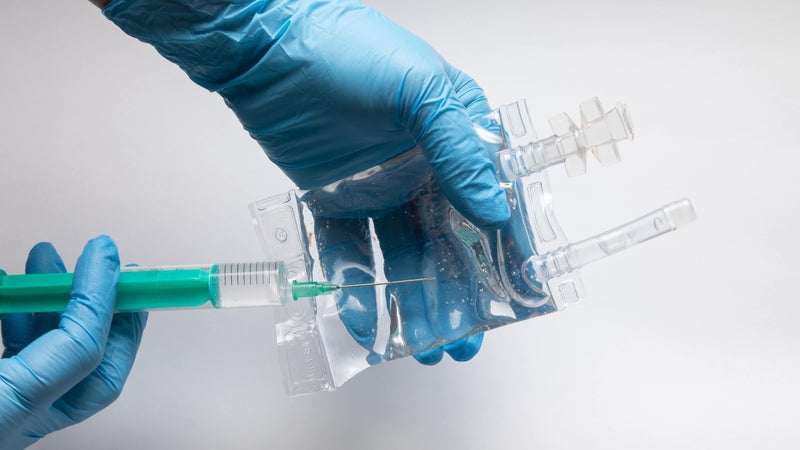What Not to Do After an IV Drip: Essential Dos and Don’ts

An IV drip can bring countless health benefits. Depending on the formula you chose (or the one recommended by your doctor), you can obtain improved energy levels, enhanced immune function, and better recovery.
However, if you are not careful with adequate care after an IV drip, it may bring more health troubles than benefits.
Understanding the essential dos and don’ts of following the administration of an IV drip can significantly influence your recovery and overall well-being.
Additionally, following proper guidelines not only aids in enhancing the effectiveness of the treatment but also helps prevent potential complications. Whether you are at a clinic or receiving treatment at home, knowing what to do and what to avoid in the hours (and days) following your IV therapy is crucial.
This guide will explore practical advice to ensure you make the most of your IV experience and support your body’s healing process.
Key Takeaways
Immediate Post-IV Care
After an IV drip, the immediate moments are crucial for ensuring the treatment’s effectiveness and your recovery. That is why it’s essential to pay attention to how you care for yourself in the hours after the procedure.
Here are some key considerations to keep in mind as you transition into your recovery phase.
Resting After the IV Therapy
After receiving an IV drip, it’s important to give yourself some time to rest. This rest period allows your body to absorb and use nutrients and fluids.
So, while you may feel like you are on top of the world after the IV drip therapy, make sure you take some time for the body to assimilate everything. Otherwise, it can increase the risk of feeling dizzy and lightheaded.
Monitoring Adverse Reactions
One of the most critical aspects of post-IV care is monitoring for any adverse reactions. Keep an eye out for symptoms such as rashes, swelling, or prolonged pain at the injection site. And, if it itches (which is pretty common), make sure you don’t scratch it.
Now, if you experience any unusual side effects, make sure you contact your healthcare provider right away.
Staying Hydrated
Hydration is key after an IV drip. Your body can quickly use the fluids administered through the drip, so staying hydrated helps maintain optimal levels.
So, make sure you drink water regularly to help flush toxins and contribute to your overall well-being.
Following Doctor’s Orders
Always adhere to the instructions given by your healthcare provider. They know your specific needs better than anyone else and can offer personalized recommendations for optimal recovery.
They may tell you how to care for the injection site. Keep it clean and dry. If you notice any signs of infection (redness, swelling, or discharge), speak to them right away.
Ensure you attend any scheduled follow-up appointments to monitor your progress and address any ongoing concerns.
Nutrition After an IV Drip
Nourishing your body with the right foods post-IV will play an essential role in optimal recovery. Focus on including high-quality proteins, such as lean meats, fish, eggs, and legumes, which can help support muscle repair and overall healing.
Also, fruits and vegetables are rich in vitamins and antioxidants, like berries, citric fruits, spinach, and broccoli, can further enhance your immune response and improve recovery.
Healthy fats, like avocado, nuts, and olive oil, can also provide essential nutrients to improve recovery and support immune function.
Lastly, whole grains such as quinoa, brown rice, and oats can help maintain stable energy levels while aiding digestion and promoting overall health.
Prioritize the previous foods to significantly contribute to your recovery process after an IV drip.
Managing Stress
After receiving an IV drip, managing stress is crucial for your recovery. High stress levels can affect your healing process and negatively affect your immune system.
Engage in relaxation techniques, such as deep breathing, meditation, or gentle yoga to help calm your mind and promote a sense of well-being. However, make sure you don’t do any strenuous activity 1-3 hours after the IV drip.
Consider setting aside some time to unwind and focus on the activities you enjoy, whether it’s reading, listening to music, or spending time with nature.
Common Mistakes to Avoid After an IV Drip
After receiving IV therapy, many people can hinder their recovery by making certain mistakes. Understanding these common pitfalls is crucial for maximizing the benefits of the treatment and making sure you have a smooth recovery.
Now that we’ve seen what are the things you want to do after the IV drip, let’s go over those things you don’t want to do after the IV drip.
Skipping Hydration
One mistake many people make is not drinking enough water after their IV therapy. While the IV does most of the work of hydrating you, keeping your water intake after the treatment is essential for lasting benefits.
Doing Intense Physical Activity
Another common mistake is engaging in intense physical activities after an IV drip. Your body needs time to recover and take in all the nutrients and fluids you receive.
So, you should avoid heavy lifting or strenuous exercise at least 24 hours after getting the treatment.
Alcohol Consumption
You should stay away from alcohol for at least 24 hours after getting your IV drip treatment. Alcohol can dehydrate you, counteracting the benefits of the IV.
It can also negatively interact with the vitamins and nutrients you receive from the IV treatments, leading to unwanted side effects.
Neglecting Signs of Infection
As mentioned, there is always the risk of getting an infection in the IV site. Not monitoring your injection side can lead to unwanted and dangerous health risks.
Foods to Avoid
Processed foods, high-sugar snacks, and caffeinated beverages can interfere with the nutrients your body is trying to absorb from the IV drip. Stick to whole, nutritious foods to enhance your recovery.
Rest and Recovery
Rest is often underestimated but is fundamental for recovery. Ensure you are getting enough sleep (7-9 hours) and avoid stressful activities.
Final Words
Post-IV care is not just an afterthought. It’s an essential part of the therapy process. By following these dos and don’ts, you can maximize the benefits of your IV drip and ensure a smooth recovery.
Remember, choosing qualified professionals like those at Drip Gym enhances not only your IV experience but also your aftercare.
Drip Gym has professionals who are highly qualified and committed to providing top-notch post-IV care. Here is what some clients have to say about Drip Gym:
Jessica: "The team at DripGym made sure I knew exactly what to do after my IV drip. They checked on me and provided valuable tips. I felt amazing and well-cared for!"
Mark: "I had my doubts about IV therapy, but after experiencing it at DripGym, I’m a believer. The professionals there guided me through every step, ensuring I followed the best aftercare practices."
Ready to experience it for yourself? Visit Drip Gym in Queens or Long Island, or book a house visit today for a professional and rejuvenating IV therapy experience.
References
- “Caring for Your IV Site | NYP.” NewYork-Presbyterian, www.nyp.org/healthlibrary/multimedia/caring-for-your-iv-site.
- Ernstmeyer, Kimberly, and Elizabeth Christman. “Chapter 23 IV Therapy Management.” Www.ncbi.nlm.nih.gov, Chippewa Valley Technical College, 2021, www.ncbi.nlm.nih.gov/books/NBK593209/.




